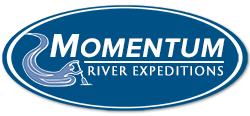
An exact answer is hard to find
The consensus is that the Kern River is 164 miles long.
This simple question is actually quite hard to answer for two reasons: Where exactly does the Kern river end? And which fork of the Kern river do you measure?
Where does the Kern river end?
For most rivers the ‘end’ is easy to see as rivers often end in either a confluence with another stream or they flow into an ocean, lake or reservoir. The Kern River though doesn’t confluence into a larger river, and it doesn’t rush into the ocean or settle into a lake. It gets divvied up to the city of Bakersfield, agricultural companies and other stake holders that own the water and is sent all over the southern end of the Central Valley. As the Kern river enters Bakersfield it does the opposite of what most streams naturally do: It grows smaller and smaller as the water is split. So an end is hard to find.
Which fork do you measure?
The Kern River has two forks that merge together after each travels a significant distance. (This confluence is now buried under Lake Isabella.) The outflow from Lake Isabella is the “main stem” of the Kern river, which is called the Lower Kern. This then plummets to Bakersfield, where the previous question comes into play. The North Fork (or Upper Kern) is the larger stem of the two in terms of acre feet delivered and average cubic feet per second. However, the South Fork travels further at 94 miles, compared to the North Forks 86 miles. Confused yet? Below is a map.

Houston, we have a problem
Working backwards, it’s easy to see where 164 miles comes from. It’s the main stem of the Kern river (Lower Kern) plus the South Fork. This works, but subjectively, it’s wrong. Why? Because no one considers the South Fork to be the more significant fork of the two. Recreationally, the North Fork is more popular. Far more people, fish, raft, kayak, and simply enjoy the North Fork over the South Fork. In addition to recreation, from the hydrology angle, the North Fork beats out the South Fork single-handedly. Simply put, the North Fork has more water in it.
How did we get here and does it matter?
It appears that when the Kern River was first measured, volume and recreation were trumped by length as the North Fork was excluded from the equation. You could argue the difference is trivial too, as the South Fork is only eight miles longer than the North Fork, which makes just a 4.9% difference when added with the main stem. And ultimately what does it really matter? Stakeholders care about acre-feet of water delivered not length. Recreation has no preference on measurement. It’s like measuring your height with shoes on versus off. It doesn’t really matter. Except this: The start of the Kern River is considered to be Lake South America, located near Mount Whitney. This is fine, except this is the headwaters for the North Fork of the Kern…
And with that, I’m throwing in the towel and signing off.
#######
Matt Volpert is six feet tall with shoes off.






it also doesn’t help that the north fork should really be called the west fork as it runs west of the south fork and barely gets any further north.